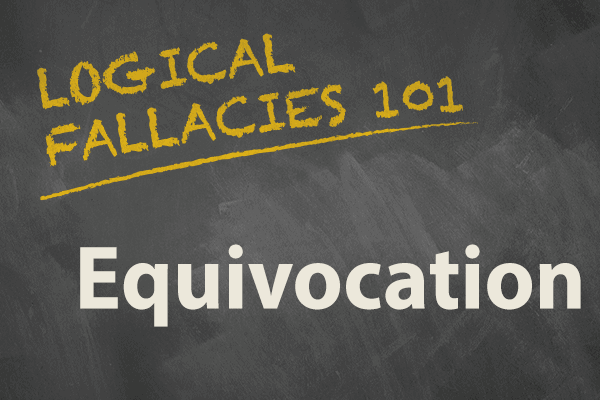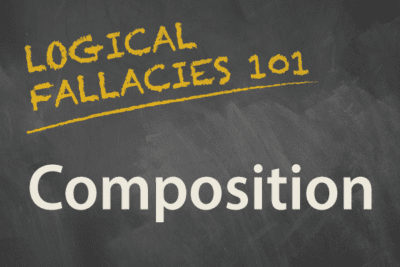If you are wondering why we are doing a logic series, I would recommend reading our introduction article “4 Ways Logic Can Improve Your Quality of Life.” If you have already read that article, or you intuitively recognize the need for clear thinking, then continue reading.
Introduction: How Can Knowing Logical Fallacies Help?
Logical fallacies can help you cut out the “Noise and Distraction,” and allow Truth to have a voice in your investigations. In their introduction to Fallacy: The Counterfeit of Argument, W. Ward Fearnside and William B. Holther say,
“In the committee rooms of Congress, in the editorials of the chain newspapers, on radio, TV, and billboards —in all of the noise and distraction in which we live our lives, only a child or a saint could expect truth to prevail simply because it is true. Truth has a chance when Noise and Distraction are on her side; otherwise she may be overcome. And these two can and do daily prevail without her or against her” (Fearnside and Holther, Fallacy: The Counterfeit of Argument, 1).
Knowing logical fallacies and identifying them can help you cut out Truth’s two enemies, “Noise” and “Distraction.” You might be wondering, “If logical fallacies can help me out, exactly what is a fallacy?” I’m glad you asked.
Two Types of Logical Fallacies
There are two types of fallacies, formal fallacies and material fallacies. Formal fallacies occur when an argument violates a formal rule like in algebra, a board game, or grammar. You must follow the rules if you are to solve the problem, play the game legitimately, or accurately communicate. Arguments can be precise or imprecise. The more precise the argument, the stronger the argument. When a person’s conclusion does not follow from its premises (i.e., previous statements), it violates a formal fallacy. An example of a formal fallacy would be the following:
- All dogs are animals.
- All cats are animals.
- Therefore, all dogs are cats.
This argument commits a formal fallacy because the conclusion does not follow the premises. It commits the fallacy of the undistributed middle and will be covered in a later post. Now, don’t start thinking that you need to take every conversation you have with your colleagues and put it into a formula (i.e., a syllogism). That would be incredibly impractical for the readers of this series and your friends. This will be clear later in the series, but for now let’s talk about Material Fallacies.
Material fallacies are fallacies related to the content or meaning of our words. Communication breakdown occurs often between two parties due to the parties’ using the same terms but in different ways or senses of the word. Thus, Peter Kreeft defines material fallacies in the following quote:
“Material fallacies . . . are mistakes in understanding the meaning or use of terms. . . .These material fallacies are found in the course of an argument, so they are called ‘fallacies,’ or mistakes in reasoning; but they are not mistakes in the logical form but mistakes in the content or matter or meaning” (Kreeft, Socratic Logic, 85).
This series will cover both formal and material fallacies, as presented by Peter Kreeft, in his book Socratic Logic. The first fallacy of this series on logic is called “The Fallacy of Equivocation.”
The Equivocation Fallacy: “Who’s Committing the Logical Fallacy?”
First, let’s look at some definitions.
Peter Kreeft defines equivocation as “the simplest and most common of all the material fallacies. It means simply that the same term is used in two or more different senses in the course of an argument” (Kreeft, Socratic Logic, 71).
Here is a more technical definition from Francis H. Parker and Henry B. Veatch:
“Since human beings can engage in verbal duplicity in as many ways as they can create and use language, the varieties of ambiguity are manifold. . . . Equiviocation, or semantic or verbal ambiguity, [is] where the ambiguity attaches to a single word or phrase. . . .” (Parker and Veatch, Logic as a Human Instrument, 66).
One of my favorite examples of equivocation comes from the Abbot and Costello comedy routine, “Who’s on First?” Within a few minutes of the video, it is clear which words are the subject of equivocation.
The equivocation is occurring because Abbott and Costello are not recognizing the different senses that a word can have. Although a funny example, the fallacy of equivocation is precisely why people share posts to Facebook and Twitter without reading the article.
Consider this hypothetical news headline: “Terror Strikes Customers at Haunted House.” Now imagine I posted this hypothetical article to my Facebook account, without actually reading its contents, and said “Another terrorist attack, when will it end? We have to do something to stop terrorism.” It is precisely this type of equivocation or ambiguity we have to guard ourselves from committing, especially in an era information.
But what about the form of an argument. “I pray to God, and you pray to God. We both pray to God.” What term, in this sentence, is the ambiguous term being used? If you said “God,” congratulations. What the term “God” means is different for different religions, and therefore the sentences above, commits the fallacy of equivocation.
Here is a final example. Ambiguous language is used in marketing regularly because the vagueness of a term is what piques someone’s curiosity and moves them to further investigation. Here is a real-life example of equivocation being committed for “Click-bait”: “Dolphins recruited to save porpoise from extinction.”
In this case, the term is “Dolphins.” This could mean the Miami Dolphins team being recruited to save an endangered species, or it could mean the underwater mammal dolphin. Sure enough, when you click on the article title, it takes you to a new headline “Trained dolphins recruited to locate, save elusive porpoise from extinction.”
How to Avoid Equivocation
Now that we know what equivocation is and its various ways of expression, how can we avoid it? If you haven’t figured it out already, it is solved by defining your terms clearly and consistently. Peter Kreeft proposes this solution to the challenges presented by equivocation:
“To expose the equivocation or double identity of the equivocal term, use these two steps.
(1) First identify the word or phrase that shifts its meaning.
(2) Then identify the two different meanings by using two different words or phrases”
(Kreeft, Socratic Logic, 71).
While equivocation is one of the most frequently committed fallacies, it is also one of the easiest to solve. Often a clarifying question, or little extra reading will give you enough understanding of the meaning of ambiguous terms:
“The golden rule here is: To unmake an ambiguity, make a distinction” (Kreeft, Socratic Logic, 72).
Daniel is the Managing Editor for Southern Evangelical Seminary’s blogs and social media. Daniel is an SES Student pursuing an M.A. in Philosophy at Southern Evangelical Seminary.
References
Fearnside, W. Ward., and William Benjamin Holther. Fallacy: The Counterfeit of Argument. Englewood Cliffs, NJ: Prentice-Hall, 1959.
Kreeft, Peter. Socratic Logic: A Logic Text Using Socratic Method, Platonic Questions, and Aristotelian Principles. Edited by Trent Dougherty. 3.1 ed. South Bend, IN: St. Augustine’s Press, 2010.
Parker, Francis H., and Henry Babcock Veatch. Logic as a Human Instrument. New York: Harper, 1959.


 Daniel is the Managing Editor for Southern Evangelical Seminary’s blogs and social media. Daniel is an SES Student pursuing an M.A. in Philosophy at Southern Evangelical Seminary.
Daniel is the Managing Editor for Southern Evangelical Seminary’s blogs and social media. Daniel is an SES Student pursuing an M.A. in Philosophy at Southern Evangelical Seminary.







